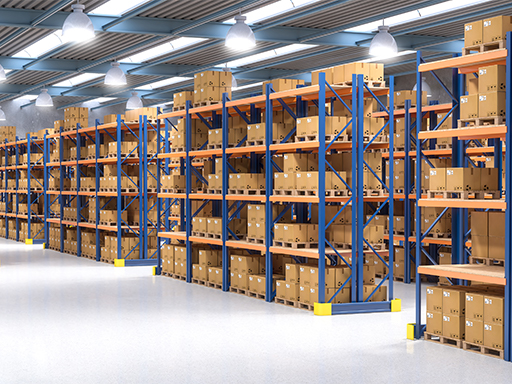If you are a seller on Amazon, you have probably wondered whether or not you should use Fulfillment By Amazon (FBA). FBA is a program where sellers can store their merchandise in Amazon warehouses. Then, when an order is placed, Amazon will pack and ship orders for you—but what are the pros and cons of fulfillment by Amazon?
In this blog, we’ll lay out the pros and cons of FBA to help you decide if it is right for your business.

Pros of Fulfillment by Amazon
#1: Convenience
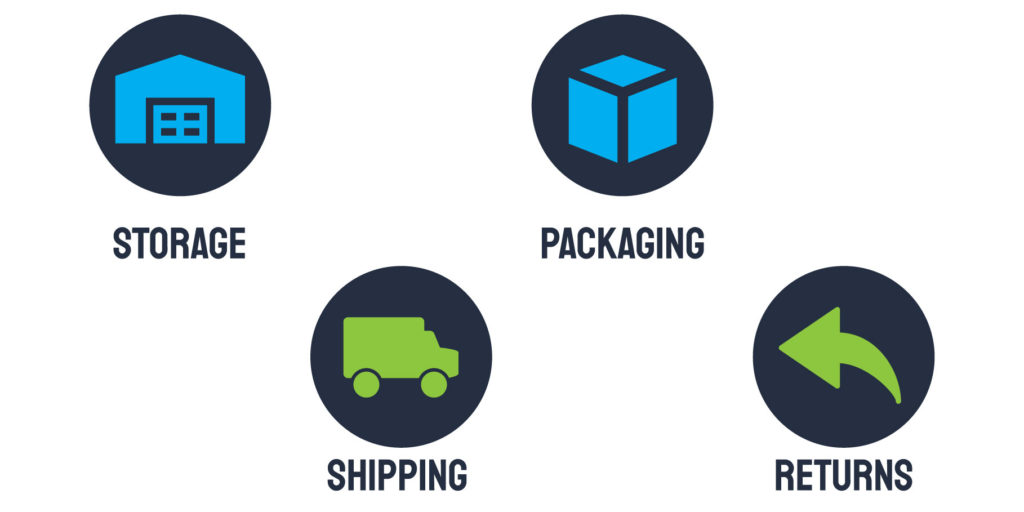
A major advantage of FBA is the convenience of letting Amazon take care of inventory storage, packing, shipping, returns, and exchanges. All of those things can take up a lot of time, especially if you sell a high volume of products.
Normally, you have to pay for packing materials. You will have to account for shipping costs to make sure your ad spend is profitable. On top of that, you will have to independently manage returns and exchanges—which can eat up a lot of your time.
Instead of handling fulfillment in-house, you could use FBA to save you time!
#2: Prime Shipping
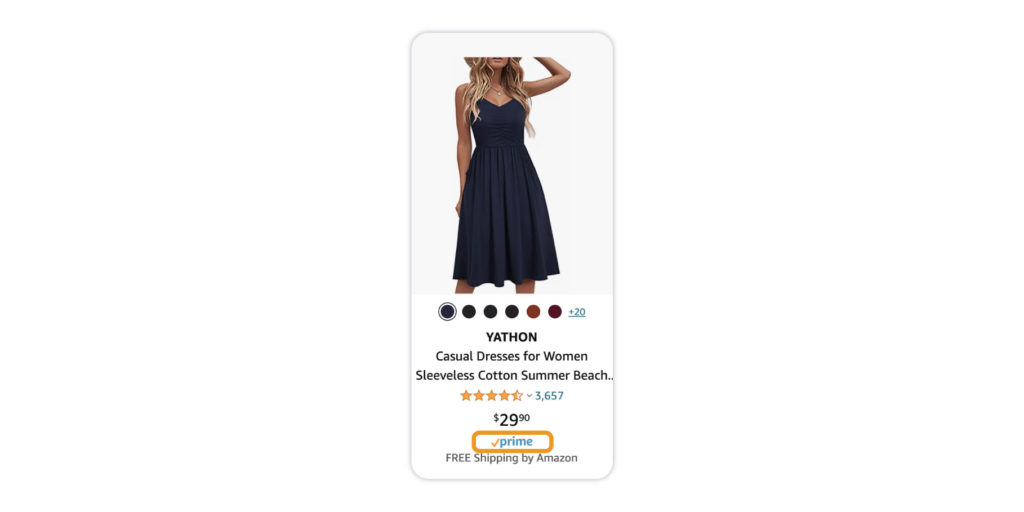
All products enrolled in FBA are automatically Prime-eligible, so consumers can expect fast shipping. You will not have to worry about making sure your products are Prime Eligible.
According to a 2018 study, 83% of shoppers cited free delivery as the most important factor when shopping online. Enrolling in FBA can help you attract more customers to your business. Since shoppers who pay for Amazon Prime seek out Prime-eligible products, you may increase traffic and conversions.
#3: Help Winning the Buy Box
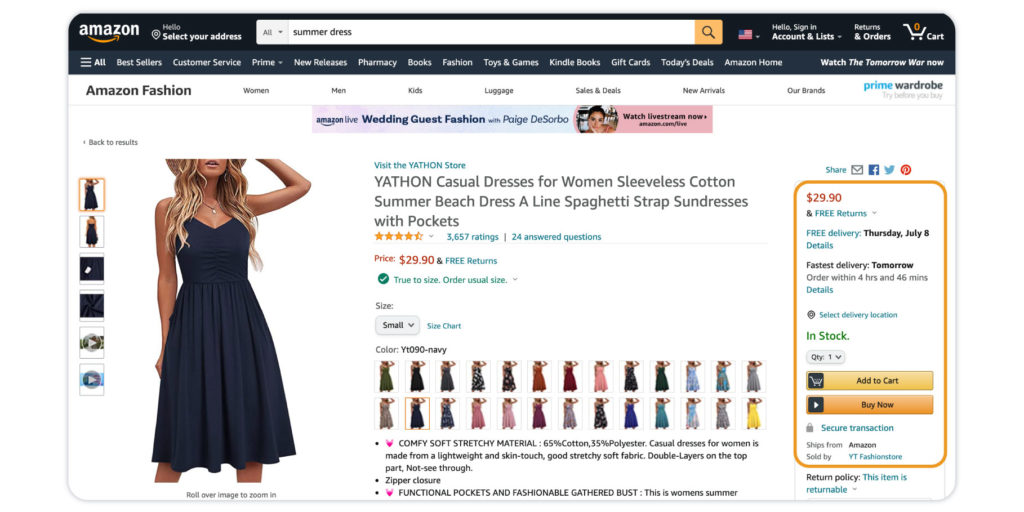
If you are running ads on Amazon, your products must appear in the Buy Box for users to see your ads. The Buy Box is the checkout box that appears on the product page. The seller who wins the Buy Box will be listed as the buy now option, greatly increasing the likelihood of a conversion.
When you enroll in FBA, your products are prioritized when it comes to winning the Buy Box. If you’ve struggled to win the Buy Box in the past, FBA might be able to help.
(But first, check out our blog for simple fixes you can make to help you win the Buy Box!)
#4: Scale Your Business

If you’re looking to scale your business, FBA may be a good solution for you. Using FBA lets you take advantage of Amazon’s distribution network, delivery service, and customer service process—infrastructure that would be costly for growing businesses to implement in-house.
Amazon offers a few different features aimed at helping your business scale using FBA:
- Reduced shipping for low-cost, lightweight orders
- No minimum for warehouse inventory
- Discounts for repeat customers
- Ship internationally for no extra charge
- Sell from your ecommerce website using FBA

Cons of Fulfillment by Amazon
#1: Cost
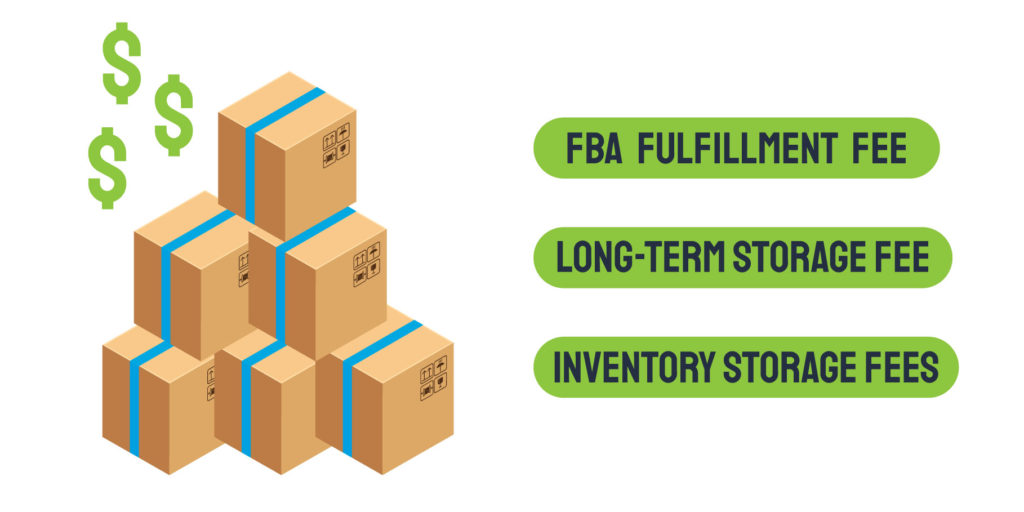
In exchange for the convenience of FBA, there are various fees associated with the service. In certain cases, it may not be cost-effective to use FBA. A couple of notable fees are:
- FBA Fulfillment Fee: A per-unit fee charged on purchases according to product dimensions, weight, and category.
- Long-term Storage Fee: You will have to pay more for older inventory stored in Amazon facilities.
- Inventory Storage Fees: A charge for the products you store at Amazon warehouses, calculated by the cubic feet your inventory occupies.
- Removal Order Fees: If you want to get rid of inventory, Amazon will get rid of it for you at a cost per item.
- Unplanned Services Fees: If you send new inventory to Amazon fulfillment centers without following proper procedures, you will be charged.
- Returns Processing Fees: If Amazon gives a customer free return shipping on an order, you will be charged.
For more info: Selling on Amazon fees guide
#2: Inventory Issues
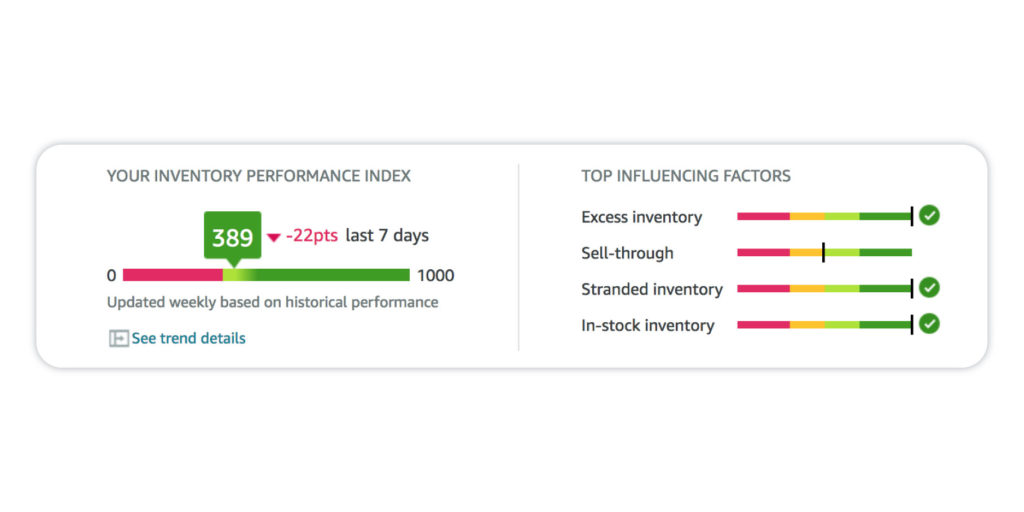
A couple of events in 2020 exposed a downside to storing inventory with Amazon. First, in March 2020, Amazon temporarily stopped accepting orders for non-essential items. For sellers entirely reliant on FBA, they were unable to refill their inventory of non-essential items.
Second, in July 2020, Amazon imposed restrictions on how much inventory sellers could send to them based on their Inventory Performance Index (IPI). Simply put, IPI is a measure of how well a seller manages their inventory, influenced by factors such as minimizing overstock, and ensuring that popular items remain in stock.
New sellers may feel constrained by these inventory restrictions until enough time has passed for them to build up a qualifying IPI score. Read more about the Inventory Performance Index.

Should You Use Fulfillment by Amazon?
There are many pros and cons of using Fulfillment by Amazon, but the biggest benefit is time saved. However, saving time comes at a cost. If you are looking for a complete solution to housing, packing, and shipping your products, FBA might be right for you—as long as you are prepared for the hefty fees that come with it.
While FBA has no inventory minimum, we recommend FBA for higher-volume businesses. In particular, businesses that are rapidly growing can benefit from using FBA (since it can save you time on setting up in-house infrastructure).
If you do decide to use FBA, it’s a good idea to also have other options. As they say, don’t put all your eggs in one basket. Amazon can change its inventory requirements on a whim, as we saw happen in 2020. Many Amazon sellers were left stranded without a plan B for distributing their products.

We hope this list of the pros and cons of Fulfillment by Amazon helps you grow your Amazon business.
Whether you use FBA or manage your inventory in-house, Omnitail can help you scale your advertising business. Simply message us to speak with an analyst today about how we can grow your Amazon profits!

